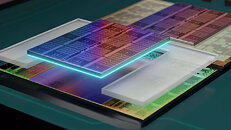
QNAP Launches TS-h1090FU High-Density 10-Bay U.2 NVMe All-flash NAS
QNAP Systems, today introduced the high-density NVMe all-flash NAS TS-h1090FU, featuring U.2 NVMe PCIe Gen 4 x4 SSD architecture for high throughput and low latency workloads. With built-in dual-port 25 GbE connectivity, PCIe Gen 4 expandability, ZFS reliability, and QNAP's SSD optimization technologies, the TS-h1090FU provides exceptional performance for IO-intensive file servers, virtualization, collaborative 4K/8K video editing, and efficient data backup/recovery applications. Businesses can retire hybrid arrays and opt for the TS-h1090FU at the same cost as optimal Tier 2 storage applications with an ideal low cost-per-GB.
"QNAP's all-flash storage lineup offers a great combination of performance, reliability, and capacity, providing businesses with the highest system performance at the lowest storage cost," said Jason Hsu, Product Manager of QNAP, adding "Running on a ZFS-based OS that is optimized for enterprise storage, the 25 GbE-ready TS-h1090FU all-flash NAS demonstrates superior performance with future-proof growth to empower mission critical workloads."
"QNAP's all-flash storage lineup offers a great combination of performance, reliability, and capacity, providing businesses with the highest system performance at the lowest storage cost," said Jason Hsu, Product Manager of QNAP, adding "Running on a ZFS-based OS that is optimized for enterprise storage, the 25 GbE-ready TS-h1090FU all-flash NAS demonstrates superior performance with future-proof growth to empower mission critical workloads."








































